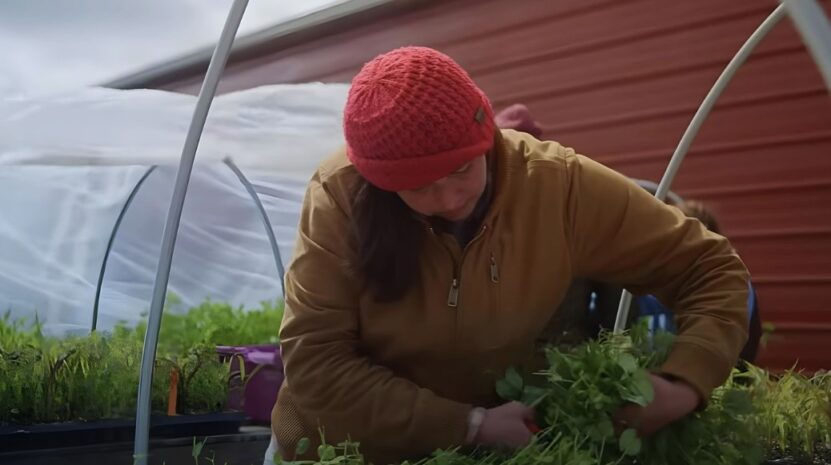Agriculture is the backbone of civilization, and nothing we have today would be possible without our ancestors building their lives around it.
Even though it may seem like agriculture is not as present as it used to be, this is simply not the truth.
In fact, it still represents a backbone. But sometimes the knowledge and practices we used to have about it in the past disappear.
Let us see the current state of indigenous knowledge and practices and how we can preserve it.
Current State of Indigenous Agricultural Knowledge
The current state of Indigenous agricultural knowledge is precarious, as many traditional practices are disappearing.
The decline is primarily due to the rapid modernization of agriculture and the influence of global agricultural practices that often overshadow local methods.
The younger generation, often more inclined towards modern techniques, may not see the value in traditional practices, leading to a loss of this knowledge.
Digitalization, however, offers a beacon of hope for preserving Indigenous agricultural knowledge. Technologies play a pivotal role in this effort.
Technologies such as:
- Mobile phones
- Computers
- Cameras
- Scanners
- Voice recorders
These tools can be used to document traditional practices in various formats, including:
- Text
- Video
- Images
- Voice recordings
These will ensure that this knowledge is not only preserved but also made accessible to future generations. Local communities are integral to this preservation process.
They are the creators, guardians, and sharers of this knowledge.
Involving them in documentation efforts ensures that the information is accurate, culturally sensitive, and reflective of true practices.
Methods for Preserving Indigenous Agricultural Knowledge

Preserving Indigenous agricultural knowledge requires a multifaceted approach involving documentation and the creation of digital repositories.
The process involves several key methods to ensure that traditional practices are accurately captured and preserved for future generations.
Documentation
One effective method is recording traditional practices in various formats such as text, video, images, and voice narrations.
Text documentation involves detailed written descriptions of agricultural techniques, often accompanied by explanatory diagrams or photographs.
Videos can capture live demonstrations of these practices, providing a dynamic and visual representation that text alone cannot convey.
Images offer snapshots of specific techniques or stages in the agricultural process, while voice narrations can capture elders’ and practitioners’ oral histories and explanations.
The multi-format approach ensures that knowledge is captured comprehensively, making it accessible to a diverse audience.
Accurate and Culturally Sensitive Recording
Accurate and culturally sensitive recording is crucial in this endeavor.
It is essential to respect the context and significance of the knowledge, ensuring that the documentation does not distort or misrepresent the practices.
It involves understanding the cultural nuances and the specific terms Indigenous communities use.
Collaborating with community elders and knowledge holders is vital, as they provide invaluable insights and ensure the authenticity of the recorded information.
The collaboration helps maintain the integrity of the knowledge and fosters trust between the communities and those documenting their practices.
Community Involvement

Working closely with community elders and knowledge holders is key to maintaining the integrity of the information.
These individuals are the custodians of traditional knowledge and have a deep understanding of its context and application.
Their involvement ensures that the recorded practices are not only accurate but also reflect the cultural and historical significance attached to them.
Digital Repositories and Databases
Databases and online platforms serve as valuable repositories for this documented knowledge.
They provide a centralized and easily accessible place for storing and sharing information.
Creating digital repositories involves organizing the documented practices into structured databases, which can be easily searched and accessed by researchers, practitioners, and community members.
These repositories ensure that the knowledge is preserved in a durable format, and protected from physical degradation.
Online Platforms and Social Media
Platforms like Facebook, YouTube, and TikTok can also be utilized to share traditional agricultural practices with a broader audience.
These social media platforms allow for the dissemination of knowledge in engaging formats, making it easier for people to learn about and appreciate indigenous agricultural methods.
Videos and live streams can show real-time demonstrations, while photos and stories can provide insights into daily practices.
Hashtags and community groups can create a network of interested individuals, facilitating knowledge exchange and support.
Examples of Indigenous Agricultural Practices

Indigenous agricultural practices offer a wealth of knowledge that contributes to sustainable farming and biodiversity.
Here are a few notable examples:
Agroforestry
Agroforestry involves integrating trees and shrubs with crops, creating a diverse and resilient agricultural system.
Agroforestry provides numerous benefits:
- Improved soil health
- Enhanced biodiversity
- Overall ecosystem support
Trees and shrubs help maintain soil structure by reducing erosion, which is vital for sustaining long-term soil fertility.
They also provide habitats for various species, promoting biodiversity and supporting ecosystem balance. Trees and shrubs can offer shade and windbreaks, protecting crops from harsh weather conditions.
Crop Rotation

Alternating crops in the same field is a traditional method that helps maintain soil nutrients and prevent the build-up of pests and diseases.
By rotating crops, farmers can reduce the need for synthetic fertilizers and pesticides, which are often harmful to the environment.
Crop rotation disrupts the life cycles of pests and diseases, reducing their prevalence and impact on crops. It also helps replenish the soil with essential nutrients, as different crops have varying nutrient requirements and contributions.
For example, legumes can fix nitrogen in the soil, benefiting subsequent crops that require high nitrogen levels.
Companion Planting
Growing mutually supportive plants together is another Indigenous practice known as companion planting.
A classic example is the “Three Sisters” method used by Native American tribes, where corn, beans, and squash are grown together.
Corn provides a structure for beans to climb, beans fix nitrogen in the soil, and squash spreads along the ground, preventing weeds.
The symbiotic relationship enhances nutrient sharing, pest control, and soil health.
Companion planting can also attract beneficial insects and repel harmful ones, reducing the need for chemical pesticides.
Water Harvesting
In regions facing droughts and water scarcity, traditional water harvesting techniques are invaluable.
For instance, the dobas in West Bengal are small, earthen ponds used to collect and store rainwater.
These structures help conserve water, ensuring a reliable supply for crops during dry periods and reducing dependence on external water sources.
Water harvesting techniques can also include the construction of terraces, bunds, and check dams, which help capture and store rainwater, allowing it to percolate into the ground and recharge groundwater levels.
Summary
As we can see, time is of the essence when preserving indigenous agricultural knowledge and practices in this day and age.
It is official now that we lose more knowledge than we obtain.
That is why many scientists, and other individuals, decided to take action to preserve as much of it as possible.
Related Posts:
- The Importance of Heritage Livestock Breeds -…
- 24 Hottest Fire Pit Ideas and Designs 2023 - Heat In…
- How to Plan and Start a Community Garden - Tips for Success
- Ultimate Guide to Building Basic Furniture:…
- How to Build an Emergency Shelter - Quick and…
- How to Create and Sustain Local Food Networks - From…








